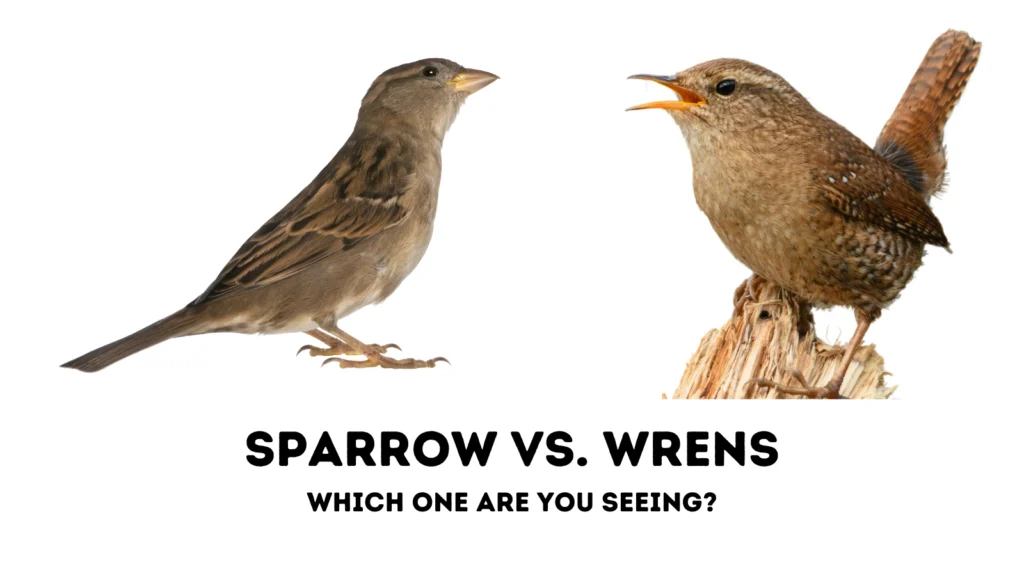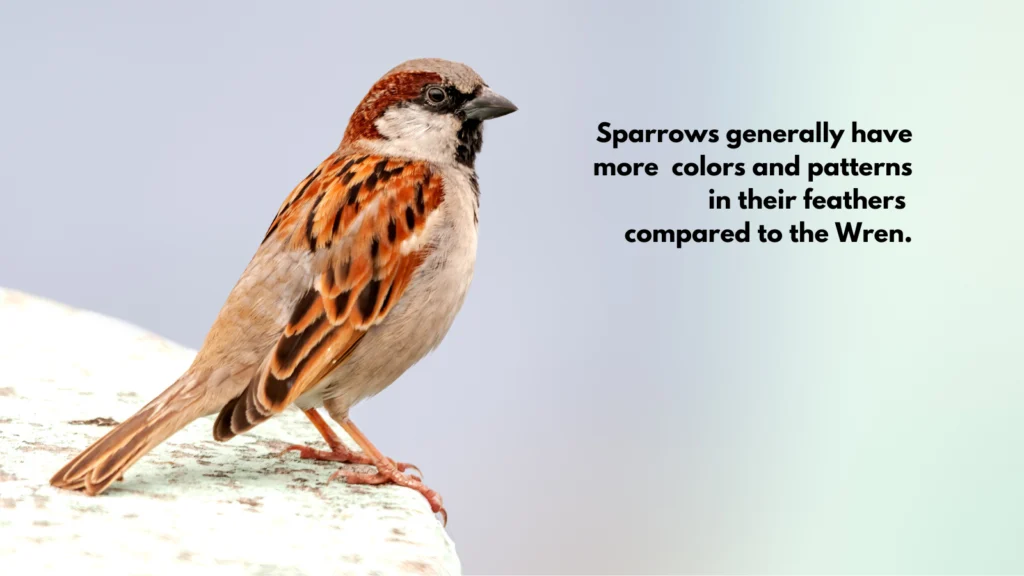Depending on where you live wrens and sparrows might be two of the most common birds you see in your backyard. Both small and often similar in appearance, these birds have distinct characteristics that can help you identify them. There are some easy tricks for identifying just which bird you’re spotting!

Wrens: The Tiny Vocalists
Wrens are small, brown birds with a distinctive shape. They have short wings, a long, thin bill, and a short tail that is often held upright. (This is one of the biggest clues for me when I’m spotting a Wren. That tail is perked up much more than a Sparrow.)
Wrens are known for their energetic behavior. They are constantly moving, hopping around with their tails cocked up. They are also very vocal, with complex and melodious songs that are quite loud for their size. (Seriously…it is a little shocking that such a clear, loud song comes from such a small bird!)
Wrens are often found in dense underbrush, gardens, and around human dwellings.

A Carolina Wren visits our feeding station.
Wrens prefer habitats with plenty of cover, such as thickets, brush piles, and dense vegetation. They are commonly seen in suburban gardens, forests, and wetlands. House Wrens, in particular, are known for nesting in birdhouses, old cans, and even laundry left outside.
We have Carolina Wrens at our home and they’ve nested in our barn and even on the front porch on a shelf for shoes (put there to keep our dogs from chewing the shoes!)
Sparrows: The Subtle Seed Eaters

Sparrows are small, plump birds with short, stout bills adapted for seed eating. Their plumage is generally more varied than that of wrens, often featuring streaks and patterns in brown, gray, and white.
Sparrows are less active than wrens and often seen foraging on the ground. They typically move in small flocks and are known for their social behavior.
Sparrows have simpler, more monotonous songs compared to the intricate melodies of wrens. House Sparrows, for instance, produce a series of chirps and cheeps.
Sparrows are highly adaptable and can be found in a wide range of environments, from rural areas to urban centers. They thrive in areas where food is abundant, such as agricultural fields, parks, and city streets. House Sparrows are especially common in cities and towns, often nesting in buildings and other structures.
Key Differences at a Glance
- Size and Shape: Wrens are smaller with a slender, long bill and an upright tail, while sparrows are plumper with a short, stout bill.
- Behavior: Wrens are energetic and vocal, frequently moving with their tails held high. Sparrows are more social and often forage on the ground.
- Plumage: Wrens have plain, subtle coloring, whereas sparrows typically have more varied and streaked plumage.
- Song: Wrens have complex and melodious songs, while sparrows’ songs are simpler and more repetitive.
- Habitat: Wrens prefer dense vegetation and human-altered environments, while sparrows are highly adaptable to various habitats, including urban areas.
By paying attention to these key differences, you can more easily identify whether the bird you are seeing is a wren or a sparrow. Both birds are fascinating in their own right and offer a unique glimpse into the diverse world of avian life!
- 8 Letter Bird Names - August 14, 2024
- 7 Letter Bird Names - August 14, 2024
- 7 Birds Named After Famous People - July 23, 2024
